Messerschmitt Bf 110F4 Zerstorer 12./NJG6 Escadrila 51 Vanatoare (2ZAW) WNr 5084 Ion Simion Otopeni AF June 1944 0A
Messerschmitt Bf 110F4 Zerstorer 12./NJG6 Escadrila 51 Vanatoare (2ZAW) WNr 5084 Ion Simion Otopeni AF June 1944 0B
Messerschmitt Bf 110F4 Zerstorer 12./NJG6 Escadrila 51 Vanatoare (2ZAW) WNr 5084 Ion Simion Otopeni AF June 1944 0C
Messerschmitt Bf 110F4 Zerstorer 12./NJG6 Escadrila 51 Vanatoare (2ZAW) WNr 5084 Ion Simion Otopeni AF June 1944 0D
Messerschmitt Bf 110G Zerstörer NJG6 WNr 110054 1944 01
Photo 01: This ghostly image of a Bf 110G-4 is unusual in that it was reportedly taken at midnight in the mid-summer of 1944. The aircraft is WNr. 110054 of NJG6.
Geschwader Stab Nachtjagdgeschwader 6 - NJG6
Messerschmitt Bf 110G Zerstörer Geschwader Stab NJG6 (2Z+AA) pilot Herbert Lutje Germany 1945 00
Profile 00: Messerschmitt Bf 110G-4 2Z+AA flown by Obstlt. Herbert Lutje, Kommodore of NJG6, May 1945. The uppersurfaces of this machine were camouflage in a simple, solid application of 75 over 76 undersurfaces with no additional mottling. The spinners were painted with a spiral design and, as no staining on the uppersurface of the wings is visible in the accompanying photograph, it is evident that the exhausts were the straight underwing type. The aircraft carried FuG 220 SN-2d radar equipment with the aerials on the nose being mounted in the vertical position, and a 90 mm armoured windscreen was fitted. Although the reference photograph shows what may have been some lettering on the starboard fin, this is believed to have been graffiti applied by US troops but, as the profile is intended to represent the aircraft as it would have appeared before capture, it has not been reproduced here.
Messerschmitt Bf 110G Zerstörer Geschwader Stab NJG6 (2Z+AA) pilot Herbert Lutje 1945 01
Photo 01: Although of poor quality, the photograph of a Bf 110G night fighter is historically interesting as it shows the aircraft flown by Obstlt. Herbert Lutje, a holder of the Oak Leaves and the last Kommodore of NJG6. The machine was captured at Aschaffenburg in May 1945 and in addition to the operational markings 2Z+AA, carried a variation of the Kommodore's Stab markings consisting of a double chevron and a horizontal bar. Lutje became a night fighter pilot in 1940, flying first with NJG1, and after bis 27th victory in May, he was awarded the Ritterkrellz and became Kommandellr of IV./NJG6 in June 1943. He became Kommodore of NJG6 in September or October 1944 and was awarded the Oak Leaves on 17 April 1945, finishing the war with 51 night and two day victories.
2 Staffel I. Gruppe Nachtjagdgeschwader 6 - 2./NJG6
Messerschmitt Bf 110 G-4 Zerstörer 2./NJG6 (2Z+FK) Mainz-Finthen 1943
Photo's 01-02: From the spring of 1943, German night fighters were employed against American aircraft in daylight operations. It was thought that the long endurance of the night fighter aircraft, the navigational skill of the crews and the ability of their aircraft to carry heavy armaments would prove useful in augmenting the German day fighters, but in fact the night fighter crews found themselves thrust into a role in which they lacked the specialised training and experience. In particular, their inability to launch concentrated attacks while in close formation led to unduly heavy losses which continued even when the night fighters were ordered only to attack single bombers separated from their formations. The night units themselves were much against their daylight employment and, taking matters into their own hands, prohibited their most experienced crews from flying daylight operations. Nevertheless, the losses considerably weakened the Nachtjagd's effort against RAF night raids for this period of 1943 and eventually forced the termination of daylight operations. These photographs show a FuG 212 'Lichtenstein' equipped Bf 110G-4 of 3./NJG6 from Mainz-Finthen, probably in the late summer of 1943. The aircraft was camouflaged in 76 but with grey 75 reverse mottles over the uppersurfaces of its wings and fuselage. From the photographs, the mottling appears darker around the cockpit area than elsewhere and all national markings appear in the same grey used for the tactical code 2Z+FK. To improve the aircraft's performance, the flame dampers, redundant during daylight sorties, have been deleted, leaving a clean area over the exhausts where these have been removed. Note that this machine has the early-pattern vertical tail surfaces.
3 Staffel I. Gruppe Nachtjagdgeschwader 6 - 3./NJG6
Messerschmitt Bf 110 G-4 Zerstörer 3./NJG6 (2Z+LL) Mainz-Finthen 1943 01-02
Photo's 01-02: From the spring of 1943, German night fighters were employed against American aircraft in daylight operations. It was thought that the long endurance of the night fighter aircraft, the navigational skill of the crews and the ability of their aircraft to carry heavy armaments would prove useful in augmenting the German day fighters, but in fact the night fighter crews found themselves thrust into a role in which they lacked the specialised training and experience. In particular, their inability to launch concentrated attacks while in close formation led to unduly heavy losses which continued even when the night fighters were ordered only to attack single bombers separated from their formations. The night units themselves were much against their daylight employment and, taking matters into their own hands, prohibited their most experienced crews from flying daylight operations. Nevertheless, the losses considerably weakened the Nachtjagd's effort against RAF night raids for this period of 1943 and eventually forced the termination of daylight operations. These photographs show a FuG 212 'Lichtenstein' equipped Bf 110G-4 of 3./NJG6 from Mainz-Finthen, probably in the late summer of 1943. The aircraft was camouflaged in 76 but with grey 75 reverse mottles over the uppersurfaces of its wings and fuselage. From the photographs, the mottling appears darker around the cockpit area than elsewhere and all national markings appear in the same grey used for the tactical code 2Z+LL. To improve the aircraft's performance, the flame dampers, redundant during daylight sorties, have been deleted, leaving a clean area over the exhausts where these have been removed. Note that this machine has the early-pattern vertical tail surfaces.
II. Gruppe Nachtjagdgeschwader 6 - II./NJG6
5 Staffel II. Gruppe Nachtjagdgeschwader 6 - 6./NJG6
Messerschmitt Bf 110G 5./NJG6 (C9+EN) pilot Wilhelm Johnen WNr 740055 Dubendorf April 28 1944 01
Photo's 01-02: When Oblt. Wilhelm Johnen, the Staffelkapitän of 6./NJG5, landed this Bf 110G4 at Dubendorf on the night of 27/28 April 1944, it was at first feared that he had defected and his family was immediately arrested. In fact, however, after destroying an RAF bomber as his 19th victory near Strasbourg in eastern France, the pursuit of the remaining bombers had continued close to the Swiss border. Johnen then experienced trouble with an overheating port engine, shut the engine down and headed for home but was blinded by searchlights and so lost his bearings that when the searchlights directed him to an airfield, he landed, only to find that he had strayed into Swiss airspace and was in neutral Switzerland. There, the aircraft and the two other members of his crew were interned. As this machine, an almost new Bf 110G4 WNr. 740055, was equipped with the latest SN-2b airborne intercept radar, 'Lichtenstein' C-1 and oblique armament, its landing intact in neutral territory was of major concern to the Germans who wished details of its equipment to remain secret. In a deal between the German and Swiss authorities, it was arranged that the Bf 110 would be destroyed, in return for which the Swiss would be sold a number of Bf-109Gs. The Bf 110 was duly destroyed on the night of 19 May 1944 and the crew repatriated, but neither the Swiss nor the Germans had been entirely honest with each other. The Swiss had examined and recorded details of the radar before the aircraft was destroyed, while the Bf-109Gs sold to the Swiss were in such poor condition that, post-war, both Messerschmitt and Daimler-Benz were obliged to pay compensation. The Bf 110 was camouflaged in a form of Wellenmuster finish on the uppersurfaces comprising 76 over a base of 75, while the lower surfaces were 76 with the underside of the starboard wing overpainted with black but which terminated in a soft, undulating line just short of the leading edge.
Messerschmitt Bf 110G 5./NJG6 (C9+EN) pilot Wilhelm Johnen WNr 740055 Dubendorf April 28 1944 03
Photo 03: The victory markings on Oblt. Johnen's aircraft were slightly out-of-date as the tally on the port fin recorded only 17 of the 18 victories with which Oblt. Johnen was credited up to the night of 27/28 April. After being repatriated, Johnen later became Kommandeur of III./NJG6 and increased his victories to 33, for which he was awarded the Ritterkreuz on 31 October 1944. He survived the war with a total of 34 confirmed victories.
6 Staffel II. Gruppe Nachtjagdgeschwader 6 - 6./NJG6
Messerschmitt Bf 110G-4/R3/B2 6./NJG6 W.Nr 720189 flown by Hptm Hebermayr Italy June 1944.
Messerschmitt Bf 110 G-4 6./NJG6 (2Z+OP) WNr 5547 Helmut Treynogga D�bendorf Switzerland Mar 15 1944 01
Photo's 01-02: This Bf 110G-4 of 6./NJG6 landed at D�bendorf in Switzerland shortly before midnight on 15 March 1944. The aircraft was fitted with auxiliary fuel tanks and had 76 undersurfaces with most of the starboard wing, including the drop tank, painted black. Note, however, that an area immediately aft of the spinner was not painted black and that the black under the wing terminated in an irregular line just short of the leading edge. The uppersurface coloring is most interesting, for while the nose area approximately forward of the windscreen retained the original factory 74/75/76 finish, the rest of the aircraft's uppersurfaces had been repainted in a low demarcation splinter scheme of 74 and 75. Note that the tactical code 2Z+0P was repeated on the nose and the Werknummer 5547 was applied to the tail.
Messerschmitt Bf 110G-4 6./NJG6 (2Z+OP) flown by Ofw. Helmut Treynogga W.Nr 5547 Switzerland Spring 1944
The photo shows Messerschmitt Bf 110 G-4 W.Nr. 5545 unit code 2Z+OP at the Duebendorf airfield in Switzerland during radar tests. Some time earlier, on March 15-16, 1944 Oberfeldwebel Helmut Treynogga and radio-operator Heinz Schwarz from 6./NJG6 departed from Echterdingen on board of Bf 110 G-4 2Z+OP. Their mission was to intercept an RAF bomber formation headed for Munich. The crew got lost and landed in Duebendorf, Switzerland and was taken into custody. The Bf 110 remained in Switzerland. However, the crew was returned to Germany about 5 weeks later. The Swiss tested the radar of the Bf 110 by pointing the Bf 110 upwards. Then a group of Swiss fighter planes flew overhead. That's when this unusual photo was taken.
Messerschmitt Bf 110G-4 6./NJG6 (2Z+OP) flown by Ofw. Helmut Treynogga W.Nr 5547 Switzerland Spring 1944 IWM HU108217
Messerschmitt Bf 110G-4/R1 of 6./NJG 6 that landed at Dubendorf in Switzerland by mistake on 15 March 1944. Note the aerial array for the FuG 202 Lichtenstein BC airborne interception (AI) radar.
Imperial War Museum HU 108217 https://www.iwm.org.uk/collections/item/object/205234650
III Gruppe Nachtjagdgeschwader 6 - III./NJG6
7 Staffel III. Gruppe Nachtjagdgeschwader 6 - 7./NJG6
Messerschmitt Bf 110G Zerstörer 7./NJG6 (2Z+FR) pilot Wilhelm Johnen Neubiberg 1945 00
Profile 00: Messerschmitt Bf 110G-4 '2Z+FR of 7./NJG6, Neubiberg 1945. This aircraft was equipped with aerials for FuG 220 SN-2d mounted on the nose and with the dipoles angled at 45 degrees. Additional aerials for a FuG 101 altimeter were mounted under the port wing, straight 'Ebersbacher' flame dampers were fitted, and the 'Schrage Musik' installation was located further to the rear of the canopy than observed on other machines. A 90 mm armoured windscreen was fitted and, although unusual, the white rudder is confirmed by the detail photograph (Photo 02). The uppersurface camouflage on the wings, horizontal tail and fuselage sides was 75 but oversprayed with 76 in such a way that small areas of the 75 remained.
Source Eduard: Messerschmitt Bf110G-4, 7./NJG6 was among the aircraft found by the Allies in the spring of 1945 in Neubiberg. Despite wearing the codes of 7. Staffel, the aircraft in question was the personal mount of the CO of III./NJG 6, Hauptmann Wilhelm Johnen. This aircraft is not as well known as another one of the aircraft flown by Johnen, C9+EN, in which he was persuaded to conduct an emergency landing following engine damage in Switzerland, on the night of 27/28 April, 1944. The aircraft was his last, from a later series production block, and equipped with the FuG 220 SN-2d antenna system, with the dipoles angled at 45�, exhausts of the Eberspacher type, and equipped with the Schr�ge Musik cannon arrangement. The camouflage scheme consisted of RLM 76 on the bottom and side surfaces, and RLM 75 on upper surfaces. The upper surface colors were lightened with an irregular snake pattern of RLM 76, such that only traces of the original darker grey color were visible. The vertical fins carried a meticulously rendered Knight's Cross, with 32 bars denoting kills. In total, Wilhelm Johnen claimed 34 kills, the last of which was gained on the night of 15/16 March, 1945.
Messerschmitt Bf 110G Zerstörer 7./NJG6 (2Z+FR) pilot Wilhelm Johnen Neubiberg 1945 01-02
Photo's 01-02: Among the aircraft photographed at Neubiberg in 1945 was tllis Bf 110G-4 of 7./NJG6. Although abandoned at the end of hostilities, that it was once the pride of the crews who flew and maintained it is evident from tl1e port fll1 which had been painstakingly decorated with a Ritterkreuz, although when this photograph was taken it had been removed as a souvenir. Each of me 32 victory bars is marked witl1 a date and the sequence of RAF and Soviet victories represented by the 21st to 30th bars confirms that this was the aircraft once flown by Oblt. Wilhem Johnen when Kommandeur of III./NJG6. Note, however, that tl1e sequence of bars does not exactly match Johnen's known victory tally as his first Soviet victory was his 23rd rather than the 22nd as shown. As on the C9+EN which he flew with NJG5, there is therefore one bar missing which results in the aircraft being decorated with 32 bars and a portrayal of the Ritterkreuz, whereas Johnen received this award after 33 victories. The four Soviet victories were all B-25s shot down over Hungary between 11 and 26 August 1944.
Aircrew Luftwaffe pilot Wilhelm Johnen 01
Photo 01: After qualifying as a pilot, Wilhelm Johnen joined I./NJG1 and flew his first night operation on 26 February 1942, during which time he achieved his first aerial victory but was also shot down and badly wounded. Despite this some what erratic start, Johnen went on to complete over 200 missions and achieved 34 victories.
Aircrew Luftwaffe pilot Wilhelm Johnen 02
Photo 02: Looking somewhat bemused by the fuss, Oberleutnant Reinhold Knacke of I./NJG1 is wearing his recently awarded Knight's Cross, presented to him on 1 July 1942 for shooting down 23 bombers. On 28/29 July 1942, Knacke became the first German night fighter pilot to shoot down an RAF Mosquito. He continued to score steadily throughout the rest of 1942 but was killed on the night of 3/4 February 1943 when his total number of victories stood at 44. Knacke was posthumously awarded the Oak Leaves three days later. On his right in this photograph is Wilhelm Johnen.
Aircrew Luftwaffe pilots I./NJG1 Wilhelm Johnen with Werner Streib June 1943 01
Photo 01: On 30 June 1943, Werner Streib bade farewell to I/.NJG1, which he had commanded since 18 October 1940 and, promoted to Major, he became Kommodore of NJG1. To Streib's left is the officer who succeeded him as Kommandeur of I/.NJG1, Hauptmann Hans-Dieter Frank. Looking on from the far end of the line is Leutnant Wilhelm Johnen.
Aircrew Luftwaffe pilot Wilhelm Johnen 01
Photo 01: After qualifying as a pilot, Wilhelm Johnen joined I./NJG1 and flew his first night operation on 26 February 1942, during which time he achieved his first aerial victory but was also shot down and badly wounded. Despite this some what erratic start, Johnen went on to complete over 200 missions and achieved 34 victories.
Aircrew Luftwaffe pilot Wilhelm Johnen 01
Photo 01: Awarded the Knight's Cross on 29 October 1944, by war's end Wilhelm Johnen had been made Kommandeur of llI./NJG6 and finished the conflict with 34 confirmed kills.
Aircrew Luftwaffe pilot Wilhelm Johnen 03
Photo 03: A very youthful 'Wim' Johnen poses for the camera.
Aircrew Luftwaffe pilot Wilhelm Johnen July 1941 01
Photo 01: Johnen with his overall black Bf 110E at Schleswig in about July 1941, shortly after he joined 3./NJG1, at that time commanded by Oberleutnant Walter Fenske. Note the Nachtjagd emblem, barely visible behind the port engine.
Aircrew Luftwaffe pilot Wilhelm Johnen 1932 01
Photo 01: Johnen with an Fw-44 'Stieglitz', one of the most popular types of aircraft flown by trainee pilots at the A/B Schulen. This radial engined biplane was first flown in the summer of 1932 and proved to be rugged and agile. It was produced in large numbers and established Kurt Tank and his Focke Wulf Company as a serious aircraft manufacturer.
Aircrew Luftwaffe pilot Wilhelm Johnen with Paul Mahle 1944 01
Photo 01: Wilhelm Johnen (CENTRE) and his Bordschutze, Ofw. Paul Mahle RIGHT, shown towards the end of the 'Battle of Berlin' in early 1944. The fin of their Bf no is marked with 14 victory bars, johnen's total after destroying a Lancaster on 27 january, one of three he shot down that night.
Aircrew Luftwaffe pilot Wilhelm Johnen Bordfunker Paul Mahle grave 01
Photo 01: After shooting down a Wellington bomber on the night of 26 March 1942, Johnen's aircraft was badly damaged by return fire from a Stirling. Johnen himself was able to parachute to safety but his Bordfunker, Obergefieiter Albrecht Risop, was killed by the first burst of gunfire from the Stirling. Risop's body was later recovered from the fighter and buried in Südlohn, close to where his aircraft crashed.
Escadrila 51 Vanatoare- 12./NJG 612 Staffel IV. Gruppe Nachtjagdgeschwader 6 - 12./NJG6
Messerschmitt Bf 110 F-4 Escadrila 51 Vanatoare 12./NJG 6 (2Z+AW) WNr. 5084 flown by Lt. Ion Simion / Constantin Octavian Otopeni airfield Romania June 1944
Messerschmitt Bf 110G-2 12./NJG6 (2Z+FW) Germany Spring 1944.
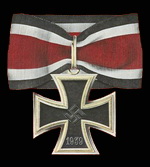
Herbert Lutje was born on 30 January 1918 at Abbesbüttel in the Gifhorn region of Niedersachsen. He joined the Luftwaffe as a cadet with the rank of Fahnenjunker in November 1937. In December 1939, Lutje was posted to the Nachjagdstaffel of LG 2. His stay with the unit was short, being transferred to 12./JG 2 in February 1940. He participated in the French campaign and flew several missions by night in single-engine fighters in June. Leutnant Lutje was transferred to the Stabstaffel of III./NJG1 in July 1940. On the night of 6/7 September 1941, he claimed his first victory on his 49th mission by night when he shot down a RAF Whitley twin-engine bomber near Metelen. On 1 May 1942, Oberleutnant Lutje was appointed Staffelkapitän of 8./NJG1.
He had recorded five victories by this time. On the night of 9/10 August, Lutje claimed a RAF Wellington twin-engine bomber shot down to record his 10th victory. By the end of 1942, he had increased his victory total to 16. During a day mission against USAAF four-engine bombers on 4 March 1943, Lutje claimed a B-17 bomber shot down near Den Helder for his 18th victory. On the night of 12/13 March, he claimed his 20th victory when he shot down a RAF Halifax four-engine bomber near Alsalte. Lutje recorded six British bombers shot down on the night of 13/14 May for his 23rd through 28th victories. Hauptmann Lutje was awarded the Ritterkreuz on 1 June. Lutje was appointed Gruppenkommandeur of IV./NJG6, based in Romania, providing aerial protection for the Ploesti oilfields, on 5 June 1943.
In September, he flew some missions from Holland gaining three victories (30-32) before relocating back to Romania. Lutje was to operate by day on occasion, intercepting 15th USAAF four-engine bombers. On 10 June 1944, Lutje shot down two USAAF P-38 twin engine fighters south of Bucharest but suffered wounds in the engagement and had to crash-land his Bf 110G-4 (W.Nr. 140018) 2Z+AF. At night, Lutje was to add six RAF Wellington twin-engine bombers and a Russian DB-3 twinengine bomber shot down over the Black Sea. At the end of August 1944, IV./NJG6 was relocated to Germany. On 1 October, Lutje was appointed Kommodore of NJG6. During 1945, Lutje was to add eight additional victories by night. On 17 April, Major Lutje was awarded the Eichenlaub (Nr 836) for 50 victories. Lutje survived the war but died on 18 January 1967 at K�ln-Wahn.
Herbert Lutje was credited with 50 victories in 247 missions. Included in his total are three victories recorded by day, including one four-engine bomber. He recorded 47 victories by night.
34 aerial victories for Herbert Lutje III./NJG 1
No Date Time A/c Type Unit Location / Comments 1 6.9.1941 23:22 Whitley III./NJG 1 Metelen 2 20.9.1941 22:18 Wellington III./NJG 1 1km W Bentheim 3 8.11.1941 0:04 Halifax III./NJG 1 4km E Terlet 4 26.3.1942 23:50 Wellington III./NJG 1 2km A Vriezenveen / Wellington of 214 Sqn, RAF 5 4.6.1942 2:25 Wellington III./NJG 1 - 6 20.6.1942 2:32 Wellington 8./NJG 1 5km SW Raalte 7 26.6.1942 0:58 Wellington 8./NJG 1 100km NE Nordhorn 8 3.7.1942 1:40 Wellington 8./NJG 1 3km N Nordhorn 9 26.7.1942 2:01 Wellington 8./NJG 1 Wielen 10 10.8.1942 4:18 Wellington 8./NJG 1 8km NW Wierden / Wellington III (BJ608) of 150 Sqn, RAF flown by Sgt S Glover, 4 killed, 1 POW 11 18.8.1942 1:38 Lancaster 8./NJG 1 3km W Emlichheim 12 27.8.1942 23:45 Wellington 8./NJG 1 3km SE Rechteren 13 5.9.1942 2:53 Wellington 8./NJG 1 NE Altenkeine 14 5.9.1942 3:59 Stirling 8./NJG 1 8km NW Hasselt 15 16.9.1942 23:22 Wellington 8./NJG 1 1km N Ahaus 16 17.12.1942 21:10 Lancaster 8./NJG 1 6km NE Zwolle 17 2.3.1943 0:08 Halifax 8./NJG 1 3km N Zuidlo 18 4.3.1943 11:31 B-17 8./NJG 1 W Den Helder 19 5.3.1943 21:35 Halifax 8./NJG 1 5km SE Staphorst 20 12.3.1943 21:18 Halifax 8./NJG 1 3km ESE Alstalte 21 30.3.1943 4:28 Lancaster 8./NJG 1 7km S Raalte 22 3.4.1943 22:45 Lancaster 8./NJG 1 3km W Winterswijk 23 3.4.1943 23:37 Halifax 8./NJG 1 22km S Zwolle 24 13.5.1943 23:52 Lancaster 8./NJG 1 5km SE Almelo 25 13.5.1943 23:42 Lancaster 8./NJG 1 5km N Eldenzaal 26 13.5.1943 23:54 Lancaster 8./NJG 1 3km S Horstel 27 14.5.1943 2:25 Halifax 8./NJG 1 5km W Dedemswaart 28 14.5.1943 2:45 Halifax 8./NJG 1 Dalen 29 14.5.1943 2:55 Halifax 8./NJG 1 19km E Hoogeveen 30 3.9.1943 23:25 Lancaster IV./NJG 6 27km NE Rheine 31 23.9.1943 22:50 Halifax IV./NJG 6 19km W Cochem 32 27.9.1943 23:40 Halifax IV./NJG 6 Neustadt 33 6.5.1944 1:05 Wellington IV./NJG 6 NW Ploesti 34 7.5.1944 23:59 Wellington IV./NJG 6 Maroshéviz 35 8.5.1944 0:18 Wellington IV./NJG 6 SW Blejesti 36 10.6.1944 8:29 P-38 IV./NJG 6 S Bucharest 37 10.6.1944 8:31 P-38 IV./NJG 6 S Bucharest / Shot down by Lutje's crewman 38 29.6.1944 2:23 Wellington IV./NJG 6 N Stockerau 39 9.8.1944 23:00 Wellington IV./NJG 6 Rumania 40 20.8.1944 23:05 Wellington IV./NJG 6 - 42 20.9.1944 23:30 Wellington IV./NJG 6 NE Neusieder See 43 2.2.1945 23:24 Lancaster Stab/NJG 6 W Karlsruhe 44 14.2.1945 20:27 Lancaster Stab/NJG 6 50km NE Frankfurt-am-Main 45 21.2.1945 20:43 Halifax Stab/NJG 6 SW Worms 46 21.2.1945 20:55 Halifax Stab/NJG 6 Saarbrucken 47 14.3.1945 21:24 Lancaster Stab/NJG 6 NW N�rnberg 48 16.3.1945 21:33 Lancaster Stab/NJG 6 30km SSW N�rnberg / Lancaster I (PD275) PHK of 12 Sqn, RAF flown by F/L Daymond, 6 killed 1 POW 49 19.3.1945 4:45 Lancaster Stab/NJG 6 - 50 21.3.1945 4:59 Lancaster Stab/NJG 6 - Victories : 50
Awards : Ehrenpokal (28 September 1942)
Deutsches Kreuz in Gold (28 January 1943)
Ritterkreuz (1 June 1943)
Eichenlaub (17 April 1945)
Units : LG 2, JG 2, NJG1, NJG6
http://www.luftwaffe.cz/lutje.htmlAsisbiz 51 aerial victories for Herbert Lutje
Date Pilot Name Unit Enemy A/C Height Time Location / Remarks 06-Sep-41 Herbert Lutje Stab III.NJG1 Whitley 23:22 Metelen 20-Sep-41 Herbert Lutje Stab III.NJG1 Wellington 22:18 1km W. Bentheim 08-Nov-41 Herbert Lutje Stab III.NJG1 Halifax 00:04 4km E. Terlet 26-Mar-42 Herbert Lutje Stab III.NJG1 Wellington 23:50 2km N. Vriezenveen/Overijssel Wellington of 214 Sqn, RAF 04-Jun-42 Herbert Lutje Stab III.NJG1 Wellington 02:25 - 20-Jun-42 Herbert Lutje 8.NJG1 Wellington 02:32 5km SW Raalte 26-Jun-42 Herbert Lutje 8.NJG1 Wellington 00:58 100km NE Nordhorn 03-Jul-42 Herbert Lutje 8.NJG1 Wellington 01:40 3km N. Nordhorn 26-Jul-42 Herbert Lutje 8.NJG1 Wellington 02:01 Wielen 10-Aug-42 Herbert Lutje 8.NJG1 Wellington 4800m 04:18 6364 A7 (De Piksen/8km NW Wierden) Wellington III (BJ608) of 150 Sqn, RAF flown by Sgt S Glover, 4 killed, 1 POW 18-Aug-42 Herbert Lutje 8.NJG1 Lancaster 4700m 01:38 6345 F9 (3km W. Emlichheim) 27-Aug-42 Herbert Lutje 8.NJG1 Wellington 1400m 23:45 3km SE Rechteren 05-Sep-42 Herbert Lutje 8.NJG1 Wellington 4700m 02:53 7359 F5 (NE Altenkeine) 05-Sep-42 Herbert Lutje 8.NJG1 Stirling 5000m 03:59 6335 G2 (8km NW Hasselt) 16-Sep-42 Herbert Lutje 8.NJG1 Wellington 4700m 23:22 737 4G7 (1km N. Ahaus) 17-Dec-42 Herbert Lutje 8.NJG1 Lancaster 2500m 21:10 6337 G5 (4km NE Zwolle) 02-Mar-43 Herbert Lutje 8.NJG1 Halifax 5800m 00:08 6359G (3km N. Zuidlo) 04-Mar-43 Herbert Lutje 8.NJG1 B-17 Fortress 4200m 11:31 4322 (W. Den Helder) 05-Mar-43 Herbert Lutje 8.NJG1 Halifax 4200m 21:35 5km SE Staphorst 12-Mar-43 Herbert Lutje 8.NJG1 Halifax 5500m 21:18 3km ENE Alstatte 30-Mar-43 Herbert Lutje 8.NJG1 Lancaster 6200m 04:28 6358 (7km S. Raalte) 03-Apr-43 Herbert Lutje 8.NJG1 Lancaster 6200m 22:45 3km NW Winterswijk 03-Apr-43 Herbert Lutje 8.NJG1 Halifax 5500m 23:37 1km N. Alost (22km S. Zwolle) 13-May-43 Herbert Lutje 8.NJG1 Lancaster 5200m 23:42 63/6/6 (5km SE Almelo) 13-May-43 Herbert Lutje 8.NJG1 Lancaster 5200m 23:52 63/6/8 (5km N. Eldenzaal) 13-May-43 Herbert Lutje 8.NJG1 Lancaster 5200m 23:54 73/6/7 (3km S. Horstel) 14-May-43 Herbert Lutje 8.NJG1 Halifax 5200m 02:25 6336 H4 (5kmm W. Dedemswaart) 14-May-43 Herbert Lutje 8.NJG1 Halifax 5200m 02:45 6342 E3 (Dalen) 14-May-43 Herbert Lutje 8.NJG1 Halifax 5000m 02:55 6328 I2 (19km E. Hoogeveen) 03-Sep-43 Herbert Lutje 8.NJG1 Lancaster 6000m 23:25 22km NE Rheine 23-Sep-43 Herbert Lutje 8.NJG1 Halifax 5200m 22:50 19km W. Cochem 27-Sep-43 Herbert Lutje 8.NJG1 Halifax 5100m 23:40 FT-9 (Neustadt) 06-May-44 Herbert Lutje Stab IV./NJG6 Wellington 4000m 01:05 24 Ost N/QM-4 (NW Ploesti) 07-May-44 Herbert Lutje Stab IV./NJG6 Wellington 4000m 23:54 24 Ost N/UL-25 (Draganesti/Marosheviz) 08-May-44 Herbert Lutje Stab IV./NJG6 Wellington 3500m 00:18 24 Ost N/TL-98 (SW Blejesti) 10-Jun-44 Herbert Lutje Stab IV./NJG6 P-38 Lightning 30m 08:29 24 Ost N/TN-64 30m (S. Bucharest) 10-Jun-44 Herbert Lutje Stab IV./NJG6 P-38 Lightning 30m 08:31 24 Ost N/TN-64 30m (S. Bucharest) 29-Jun-44 Herbert Lutje Stab IV./NJG6 Wellington 02:23 14 Ost N/BM-45 (N. Stockerau) 09-Aug-44 Herbert Lutje Stab IV./NJG6 Wellington 23:00 Rumänien durch 17-Aug-44 Herbert Lutje Stab IV./NJG6 Wellington 23:05 Rumanien 20-Aug-44 Herbert Lutje Stab IV./NJG6 Wellington 23:05 Rumanien 22-Aug-44 Herbert Lutje Stab IV./NJG6 Il-4 01:05 - 20-Sep-44 Herbert Lutje Stab IV./NJG6 Wellington 2000m 23:30 14 Ost N/EP (Hegyeshalom) 02-Feb-45 Herbert Lutje StabNJG6 Lancaster 23:24 W. Karlsruhe 14-Feb-45 Herbert Lutje StabNJG6 Lancaster 20:27 50km NE Frankfurt-am-Main 21-Feb-45 Herbert Lutje StabNJG6 Halifax 20:43 SW Worms 21-Feb-45 Herbert Lutje StabNJG6 Halifax 20:55 Saarbrucken 14-Mar-45 Herbert Lutje StabNJG6 Lancaster 21:24 NW Nuremburg 16-Mar-45 Herbert Lutje StabNJG6 Lancaster 21:33 SSW Nuremburg Lancaster I (PD275) “PH-K” of 12 Sqn, RAF flown by F/L Daymond, 6 killed 1 POW 19-Mar-45 Herbert Lutje StabNJG6 Lancaster 04:45 - 21-Mar-45 Herbert Lutje StabNJG6 Lancaster 04:59 -
'I gave a short burst of fIre from my cannon and the Wellington caught fire ... '
LEUTNANT WILHELM JOHNEN, I./NJG 1
After I finished my course of studies at the Grammar School in Homberg, in the Lower Rhine region, war broke out and I volunteered for service in the Luftwaffe on the basis of the qualifications I already had as a glider pilot. My training as a pilot in the Luftwaffe until my qualification as a night fighter pilot took place in Zeltweg, Vienna, Munich and Stuttgart. I trained on all types of aircraft up to blind-flying on multi-engined machines.
I flew my first operation on night fighters with the famous Gruppe I./NJG1, which was based at Venlo in Holland, only about 32 kilometres away from my home town. This first operational flight, which took place on 26 February 1942, turned out to be nothing short of a catastrophe. British bombers were heading for the Ruhr area, which was defended by heavy Flak and searchlight units. My brief was to shoot down any bombers caught in the searchlights above 5,000 metres.
As I flew towards the target, I felt as if I was flying into Hell itself. Anti-aircraft shells were exploding at all heights. Searchlights were sweeping the area looking for bombers and bombs were exploding in the whole Ruhr area. Then I saw a Wellington coned by searchlights very near to us and on my heading.
I gave a short burst from my cannon, and the Wellington caught fire and dived down into the inferno. After the attack on the Ruhr area was over, I turned on a north-westerly heading in the direction of Holland. Suddenly my radio operator, Risop, came up on the intercom - 'Herr Leutnant, there's a four engined aircraft right above us!' Unbelievingly I looked up against the starlit sky, because I had never seen a four-engined aeroplane before. It must have been a Short Stirling. My radio man's last words were, 'Have a go, Herr Leutnant, and God be with us!' I made my attack obliquely from the port side and below. The bomber met our attack with all guns blazing, ripping open the cabin and fatally wounding my radio operator. A bullet wounded me across the surface of my left leg, while further bullets hit my Verey cartridges and the aircraft's fuel tanks.
The Me 110 was burning furiously. It went into a flat spin, losing height rapidly. I jettisoned the cabin roof and tried in vain to abandon the machine. The immense centrifugal force was pressing me back against the side of the cabin. I was sure that my end had come. Then there was an explosion, and I was hurled from the aircraft. I knew that I was on fire. I pulled my parachute ripcord immediately. The parachute opened - and then came the next shock: the parachute had been torn by bullets and one of the panels was fluttering in the wind. With all the strength I could muster I pulled the lines on the sound side of the parachute towards myself to try and stop the panels from turning inside-out. In this way I came to earth with a bang - or, rather a splash - in a lake in the vicinity of Südlohne. Fortunately, I still had my signal pistol, so I fired a cartridge into the air and hoped for salvation. Two men rowed out to me in a small boat and rescued me from my miserable plight. Two hours later I was in bed in a hospital in Duisburg with one leg badly shot-up and severe burns. It was about four months before my recovery was complete. Risop, my radio operator, found his last resting place in Südlohne.
Wilhelm Johnen
Wilhelm 'Wim' Johnen was born in the small town of Homberg, situated on the western bank of the Rhine River and close to the industrial city of Duisburg, on 9 October 1921. He remained in Homberg until the outbreak of the Second World War in September 1939, by which time he had just completed his sUldies and obtained his Abitur. The following month, Johnen turned 18 and he applied to join the Luftwaffe on the basis of qualifications he had already attained as a glider pilot. His formal application to become an officer was accepted and he began his training as an officer cadet with Fliegerausbildungsregiment Nr. 32 at Pardubitz (now Pardubice) in Czechoslovakia, where he received basic infantry training. Having endured several months of field exercises, marching and shooting practice, 'Wim' Johnen spent the next eight months learning to fly elementary and advanced single-engined aircraft and qualified for his pilot's badge on 21 September 1940.
Selected to fly multi-engined aircraft, he was then posted to C-Schule 11 at Zeltweg-Steiermark in Austria and, during a three-month training period, flew such twin-engined aircraft as the He-111 and Do-17 as well as the three-engined Ju-52. On obtaining the 'C' grading to his pilot's licence which allowed him to fly multi-engined aircraft, Johnen attended the Blindjlugschule at Wien-Aspern before progressing to Schleissheim, near Munich, where he received Zerstörer training and, on 1 April 1941, was commissioned as a Leutnant.
It was at about this time, and due mainly to the RAF's intensified air attacks against Germany, that Johnen decided to join the Nachtjagd. The war, which he feared would be over by the time his training was complete, had now become more personal. His home-town, and particularly the surrounding area of Duisburg, with its Thyssen steel factories and large inland port, had been identified as an important, strategic target within the industrial Ruhr valley and had been specifically attacked on a number of occasions by RAF Bomber Command. As his home was in the outskirts of Duisburg, he naturally feared for the safety of his family and it was this concern that led him to apply to join the Nachtjagd. Accordingly, on 18 May 1941, he began his night fighter training at Stuttgart-Echterdingen. His regular Bordfunker was Gefreiter Albrecht Risop, whom he had first met during their training at Schleissheim. After six weeks of intense instruction, Johnen and Risop were transferred to the operational night fighter Staffel 3./NJG1, arriving at this unit's airfield in Schleswig on 25 June 1941.
On 11 July 1941, after a brief period of familiarisation with the Staffel, Johnen flew his first operational mission, during which he encountered a Wellington bomber. However, he failed to shoot it down and thus became aware of the fundamental difficulties involved in fighting at night. Almost another eight months and a further 28 missions passed before, on the evening of 26 March 1942, he took off from Venlo 1 and, at 23.30 hrs, intercepted a Wellington which he shot down north-west of Wesel as his first victory 2 A few minutes later, Risop spotted a four-engined bomber which he identified as a Short Stirling. After a brief exchange of fire between the aircraft, the cockpit and fuselage of Johnen's Bf 110 was raked with machine gun fire and the petrol tanks set ablaze. The same burst of gunfire also killed Risop and wounded Johnen, who then desperately fought to extricate himself from the burning cockpit. Nevertheless, the stricken fighter plunged 3,000 metres with Johnen still aboard before it exploded and threw him clear. Although he was then able to safely parachute to the ground, Johnen received second degree burns to his face and a large number of shell splinters in his left leg kept him from operational flying for two-and-a-half months.
1. 3./NJG1 transferred from Schleswig back to Venia on 1 December 1941.
2. It is highly probable that this aircraft was Wellington X3589 KO-F from 115 Squadron, which crashed at Uedem, approximately 35 kilometres west of Wesel.
A short time after his return to operations, during an RAF raid on Essen on the night of 16/17 June 1942, Johnen shot down a Wellington as his second victory. In recognition of this achievement, he was awarded the Iron Cross Second Class on 26 July 1942.
On 1 December 1942, 3./NJG1 was re-designated 5./NJG5 and transferred to Parchim in north-eastern Germany under the command of Obit. Leopold Fellerer. Due to the airfield's location, 5./NJG5 was less active than units stationed further westwards, and during the first five months of the new year Johnen flew only a small number of sorties. However, in May 1943, the Staffel was posted back to the west to help counter the increasing raids against the Ruhr, and in the early hours of 22 June 1943, after more than a year since his last victory, Johnen finally increased his personal tally by shooting down two bombers during a raid on Krefeld. Three nights later, he intercepted and shot down a Halifax as his fifth confirmed victory, and on 1 July 1943, Johnen was promoted to Oberleutnant.
In August 1943, when Air Chief Marshal Sir Arthur Harris' prolonged offensive began against the German capital, later known as the 'Battle of Berlin' and which lasted until February 1944, 5./NJG5 was once again operating from Parchim and found itself in the thick of the battle. On 24 August 1943, Johnen claimed a Stirling and a Halifax to the north-west of Berlin, and four days later he was awarded the Iron Cross First Class.
Later, with 18 victories, and a growing reputation as a capable night fighter with leadership potential, he was made Staffelkapitän of 6./NJG5 on 31 March 1944. The following month, II./NJG5 was transferred to Leipheim in southern Germany, but when the airfield was badly damaged during a daylight raid, the Gruppe moved to Hagenau in western France.
At 00.48 hrs on 28 April 1944, Johnen took off from Hagenau with Oberfeldwebel Paul Mahle 3 and Leutnant 'Brinos' Kamprath, with orders to intercept 322 Lancasters that had been tasked to destroy armament factories in Friedrichshafen, a small town in southern Germany situated on the banks of Lake Constance. After shooting down one Lancaster, Johnen was hit by return fire from another which set fire to his fighter's port engine. Flying on one engine and with no other option, he was forced to land his aircraft at the nearest available airfield, which turned out to be Dubendorf in neutral Switzerland. Surrendering to Swiss soldiers, the three-man crew was interned and lengthy negotiations with the Swiss government followed. Naturally, as Johnen's aircraft was fitted with SN-2, 'Naxos' and 'Schrage Musik', the Germans did not want it to fall into Allied hands, and in an agreement finally reached between the German and Swiss Intelligence Services, it was arranged that the machine would be destroyed. In exchange, the Swiss would receive 12 Bf-109G-6 fighters from the Luftwaffe at a favourable price. The Bf 110 was subsequently blown up on 18 May 1944, and Johnen and his crew were released six days later.
3. Paul Mahle had been a weapons technician at Parchim and, together with Rudolf Schonert, had developed the first operational 'Schrage Musik' weapons installation. By the time of this particular operation, Mahle had been Johnen's regular Bordschutze for several months. Kamprath, the Gruppe's Signals Officer, was filling in for Johnen's regular Bordfunker who was away on leave.
Meanwhile, however, as it was at first believed that the crew had defected, the families of the crew had been arrested and imprisoned by the Gestapo. Later, after it had been established that the crew had carried out an emergency landing due to combat damage, the families were released and the authorities hushed up the whole incident.
On 10 May 1944, II./NJG5 was re-designated III./NJG6 and Johnen was given command of 8./NJG6. From June 1944 the Gruppe, under the command of Major Herbert Lutje, was transferred to Steinamanger in Hungary, close to the Austrian border. Operating from this airfield, III./NJG6 was tasked with defending Vienna and Budapest from Allied bombers operating from Italy. Over a period of three months, between 26 June and 21 September 1944, Johnen shot down a further 14 aircraft taking his number of confirmed victories to 33. A month later, on 1 October 1944, he was promoted to Hauptmann and, a few weeks later, on 29 October, he was awarded the Knight's Cross.
Four of these aircraft were American B-25 Mitchell bombers, supplied to the Soviet Union via the Arctic convoy route.
With the Russians advancing through Hungary, III./NJG6 was forced to withdraw within Germany's own borders to Leipheim, Neubiberg and then to Bad Aibling, south of Munich. On 13 February 1945, Johnen became Gruppenkommandeur of III./NJG6, and a month later, during a raid against Würzburg on the night of 15/16 March 1945, he shot down a Lancaster for his 34th and final victory of the war.
On the night of 30 April 1945, with the Americans in control of the area around Munich, Hauptmann Will1elm Johnen gave the men of his Gruppe orders to destroy their remaining aircraft before they fell into enemy hands. When the war finally ended on 8 May 1945, Johnen was held for a short time in American captivity and later studied for several years at Munich University where he obtained an engineering degree in construction. He was then employed by a contractor working for Messerschmitt Pre-Fabricated Buildings, owned by Professor Willi Messerschmitt, and later formed his own construction company, which he managed for almost 40 years. Wilhelm Johnen died at his home in Uberlingen on Lake Constance, on 7 February 2002.
Wilhelm ‘Wim' Johnen was born on 9 October 1921 at Homberg in Niederrhein. In June 1941, Johnen was posted to NJG1. Leutnant Johnen was assigned to 3./NJG1. He gained his first victory on the night of 26/27 March 1942, when he shot down a RAF Wellington twin-engine bomber. He then attacked a RAF Stirling four-engine bomber but his Bf 110D-3 (W.Nr. 4224) G9+FL was hit by return fire from the bomber's gunners killing his crewman and wounding Johnen in the left leg. Johnen managed to bale out of the burning aircraft. He was to spend a considerable time in hospital for treatment to his burns and wounded leg. He returned to combat duty in July 1942. On 1 October, 3./NJG1 was redesignated 1./NJG5. In December, 1./NJG5 was redesignated 5./NJG5. Johnen recorded seven victories during 1943. In January 1944, he added a further seven victories, including three RAF Lancaster four-engine bombers on the night of 27/28 January to record his 13th through 15th victories. He downed a further three Lancasters on the night of 15/16 February (16-18).
On 3 March 1944, Johnen was appointed Staffelkapitän of 6./NJG5. On the night of 27/28 April, Johnen shot down a RAF Lancaster four-engine bomber. He and his crew then made contact with another over Lake Constance heading west for Switzerland. Johnen attacked the Lancaster but his Bf 110G-4 (W.Nr. 740055) C9+EN received hits in the encounter setting the port engine alight. Coned by Swiss searchlights and with a dead engine Johnen was obliged to land at the Swiss airfield at Zürich-Dubendorf. Johnen and his crew were interned only to be repatriated some days later amid much political manoeuvering. Johnen was appointed Staffelkapitän of 8./NJG6 on 10 May 1944 based in Hungary. In a little over two months, Johnen added 11 victories to his tally, including four Russian Mitchell twin-engine bombers. Oberleutnant Johnen was awarded the Ritterkreuz on 23 July for 33 victories. In autumn 1944, Johnen was appointed Gruppenkommandeur of III./NJG6. He led the unit until the end of the war.
Post-war, Johnen attended university and gained an Engineering degree. In 1952 he worked with Professor Willi Messerschmitt before taking up construction engineering, successfully running his own business. Johnen died on 7 February 2002 at Überlingen. ‘Wim' Johnen was credited with 34 victories in over 200 missions. All his victories were recorded at night. Included in his victory total are 24 four-engine bombers.
34 aerial victories for Wilhelm Johnen I./NJG 1
No Date Time A/c Type Unit Location / Comments 1 26.3.1942 23:30 Wellington 3./NJG 1 Essen 2 17.6.1942 1:00 Wellington 3./NJG 1 Holland 3 22.6.1943 1:43 Halifax 3./NJG 1 5km E Roosendaal 4 22.6.1943 2:33 Wellington 3./NJG 1 NWHaamstede 5 25.6.1943 1:01 Halifax 3./NJG 1 3km N Rosenburg 6 24.8.1943 1:03 Stirling 5./NJG 5 NW Berlin 7 24.8.1943 1:08 Halifax 5./NJG 5 WNW Berlin 8 1.9.1943 0:58 Lancaster 5./NJG 5 30km SW Berlin 9 3.1.1944 2:56 Lancaster 5./NJG 5 20km SW Berlin 10 3.1.1944 3:16 Lancaster 5./NJG 5 70km SW Berlin 11 6.1.1944 3:27 Lancaster 5./NJG 5 Near T�tos 12 20.1.1944 19:36 Lancaster 5./NJG 5 NNW Berlin 13 27.1.1944 20:36 Lancaster 5./NJG 5 SSE Berlin 14 27.1.1944 20:57 Lancaster 5./NJG 5 SSE Berlin 15 27.1.1944 21:17 Lancaster 5./NJG 5 SW Berlin 16 15.2.1944 20:34 Viermot 5./NJG 5 SE Damgarten 17 15.2.1944 20:44 Lancaster 5./NJG 5 UF 18 15.2.1944 21:20 Lancaster 5./NJG 5 NNW Berlin 19 28.4.1944 1:31 Lancaster 6./NJG 5 Near Besançon 20 26.6.1944 0:22 Wellington 8./NJG 6 SE Hungary / Wellington X (LN748) “E” of the 205th BG 21 7.7.1944 1:17 Wellington 8./NJG 6 7km N St Polten 22 7.7.1944 1:25 Wellington 8./NJG 6 S Pyhra 23 11.8.1944 2:08 Mitchell 8./NJG 6 SE Hungary 24 15.8.1944 22:59 Mitchell 8./NJG 6 SE Hungary 25 21.8.1944 22:42 Mitchell 8./NJG 6 SE Hungary 26 22.8.1944 22:23 Halifax 8./NJG 6 13km S Szombor / Halifax II of the 614 Sq 205 BG 27 26.8.1944 21:53 Halifax 8./NJG 6 SE Hungary / Halifax II of the 1586 Flight 205 BG (Polish crew) 28 26.8.1944 22:30 Mitchell 8./NJG 6 SE Hungary 29 27.8.1944 21:50 Halifax 8./NJG 6 SE Hungary / Halifax II of the 1586 Flight 205 BG (Polish crew) 30 28.8.1944 22:12 Halifax 8./NJG 6 SE Hungary 31 10.9.1944 22:38 Halifax 8./NJG 6 SE Hungary / probably Liberator VI of the 1586 Flight 205 BG 32 13.9.1944 21:30 Halifax 8./NJG 6 SE Hungary / probably Liberator VI of the 1586 Flight 205 BG 33 21.9.1944 20:32 Halifax 8./NJG 6 SE Hungary / probably Liberator VI of the 31 Sq 205 BG 34 16.3.1945 2:45 Lancaster Stab III./NJG 6 15km SE W�rzburg (Bavaria) Victories : 34
Awards : Ehrenpokal (20 March 1943)
Deutsches Kreuz in Gold (23 July 1944)
Ritterkreuz (29 October 1944)
Units : NJG1, NJG5, NJG6
http://www.luftwaffe.cz/johnen.htmlAsisbiz 34 aerial victories for Wilhelm Johnen I./NJG 1
Date Pilot Name Unit Enemy A/C Type Height Time Location Remarks 26-Mar-42 Wilhelm Johnen 3.NJG1 Wellington 23:30 NW Wesel 17-Jun-42 Wilhelm Johnen 2.NJG1 Wellington 01:00 - 22-Jun-43 Wilhelm Johnen 2./NJG1 Halifax 5300m 01:43 5km E Roosendaal 22-Jun-43 Wilhelm Johnen 2./NJG1 Wellington 1500m 02:33 05 Ost S/JG33 (NWHaamstede) 25-Jun-43 Wilhelm Johnen 2./NJG1 Halifax 3800m 01:01 3km N Rosenburg 24-Aug-43 Wilhelm Johnen 5./NJG5 Stirling 4200m 01:02 NW Berlin 24-Aug-43 Wilhelm Johnen 5./NJG5 Stirling 4500m 01:07 NW Berlin 01-Sep-43 Wilhelm Johnen 5./NJG5 Lancaster 4200m 00:58 20km SW Berlin 03-Jan-44 Wilhelm Johnen 5.NJG5 Lancaster 02:56 20km SW Berlin 03-Jan-44 Wilhelm Johnen 5.NJG5 Lancaster 03:12 70km SW Berlin 20-Jan-44 Wilhelm Johnen 5.NJG5 Lancaster 19:36 NNW Berlin 27-Jan-44 Wilhelm Johnen 5.NJG5 Lancaster 20:36 SSE Berlin 27-Jan-44 Wilhelm Johnen 5.NJG5 Lancaster 20:57 SSW Berlin 27-Jan-44 Wilhelm Johnen 5.NJG5 Lancaster 21:18 SW Berlin 15-Feb-44 Wilhelm Johnen 5./NJG5 4-mot. Flzg. 5500m 20:34 zw Rostock u Strahlsund 15-Feb-44 Wilhelm Johnen 5./NJG5 Halifax 20:45 Gegund Kummenerer See 15-Feb-44 Wilhelm Johnen 5./NJG5 Halifax 5500m 21:30 Gegend Berlin 28-Apr-44 Wilhelm Johnen 8./NJG6 Halifax 5200m 01:31 30-60km SW Strasbourg 26-Jun-44 Wilhelm Johnen 8./NJG6 Wellington 2500m 00:22 SW Plattensee Wellington X (LN748) “E” of the 205th BG 27-Jun-44 Wilhelm Johnen 8./NJG6 Wellington 00:22 sudEast of Balaton durch 07-Jul-44 Wilhelm Johnen 8./NJG6 Wellington 2300m 01:17 40km S Obj Fels-am-Wagram 07-Jul-44 Wilhelm Johnen 8./NJG6 Wellington 2000m 01:25 40km S Obj Fels-am-Wagram 11-Aug-44 Wilhelm Johnen 8./NJG6 B-25 Mitchell 02:08 24 Ost/QB-4 Himmelbettabschuss 16-Aug-44 Wilhelm Johnen 8./NJG6 B-25 Mitchell 3400m 22:59 Raum Skorpion durch 21-Aug-44 Wilhelm Johnen 8./NJG6 B-25 Mitchell 22:42 Himmelbettabschuss durch 22-Aug-44 Wilhelm Johnen 8./NJG6 Halifax 2800m 22:23 14 Ost N/OJ-33 (S Fiume) Halifax II of the 614 Sq 205 BG 26-Aug-44 Wilhelm Johnen 8./NJG6 Halifax 3200m 22:00 MT-54 (SE Baja) Halifax II of the 1586 Flight 205 BG (Polish crew) 26-Aug-44 Wilhelm Johnen 8./NJG6 B-25 Mitchell 22:30 14 Ost/OT-76 durch 27-Aug-44 Wilhelm Johnen 8./NJG6 Halifax 3800m 21:50 14 Ost/US-59 Halifax II of the 1586 Flight 205 BG (Polish crew) 28-Aug-44 Wilhelm Johnen 8./NJG6 Halifax 1800m 22:12 14 Ost/MS-45 (N Mohacs) 10-Sep-44 Wilhelm Johnen 8./NJG6 Halifax 2700m 23:38 14 Ost/NU-3/MU-9 (W Szeged) probably Liberator VI of the 1586 Flight 205 BG 13-Sep-44 Wilhelm Johnen 8./NJG6 Halifax 4000m 21:30 14 Ost/MT-86 (SE Baja) probably Liberator VI of the 1586 Flight 205 BG 21-Sep-44 Wilhelm Johnen 8./NJG6 Halifax 2500m 20:32 14 Ost N/NU-73 (W Senta) probably Liberator VI of the 31 Sq 205 BG 16-Mar-45 Wilhelm Johnen Stab III./NJG6 Lancaster 02:45 15km SE Wurzburg
Helmut Treynogga
Units: 6/NJG-6
Awards: Night Fighter Operational Clasp
Known Aircraft: Bf 110G-4/B2 Werk # 5547 '2Z + OP' (interned 3/15/44)
Remarks: Interned in Switzerland 15 March, 1944 at D�bendorf. Bf 110 Loss List
Luftwaffe pilot Walter Nowotny 258 kills
Luftwaffe pilot Theodor Weissenberger 208 kills
Luftwaffe pilot Heinz Bar 175 kills
Luftwaffe pilot Franz Schall 133 kills
Luftwaffe pilot Rudolf Rademacher 126 kills
Luftwaffe pilot Adolf Galland 104 kills
Luftwaffe pilot Hermann Buchner 58 kills
Luftwaffe pilot Erich Hohagen 50 kills
Luftwaffe pilot Rudolf Sinner 39 kills
Luftwaffe pilot Ernst-Wilhelm Modrow 32 kills
Luftwaffe pilot Richard Altner 25 kills
Luftwaffe pilot Gunther Wegmann 21 kills
Luftwaffe pilot Wolfgang Schenck 18 kills
Luftwaffe pilot Franz Holzinger 10 kills
Luftwaffe pilot Helmut Lennartz 10 kills
Luftwaffe pilot Alfred 'Bubi' Schreiber 9 kills
Luftwaffe pilot Eduard Schallmoser 3 kills
Luftwaffe pilot Wilhelm Batel 1 kills
Luftwaffe pilot Joachim Fingerlos 1 kills
Bibliography: +
- Campbell, Jerry L. Messerschmitt BF 110 Zerstörer in Action. Carrollton, Texas: Squadron/Signal Publications, Inc., 1977. ISBN 0-89747-029-X.
- Caldwell, Donald and Richard Muller. The Luftwaffe over Germany: Defence of the Reich. London: Greenhill Books, 2007. ISBN 978-1-85367-712-0.
- Ciampaglia, Giuseppe. 'Destroyers in Second World War'. Rome: IBN editore, 1996. ISBN 88-86815-47-6.
- Deighton, Len. Fighter: The True Story of the Battle of Britain. London: Pimlico, 1996. ISBN 0-7126-7423-3.
- de Zeng, H. L., D. G. Stanket and E. J. Creek. Bomber Units of the Luftwaffe 1933-1945: A Reference Source, Volume 2. London: Ian Allan Publishing, 2007. ISBN 978-1-903223-87-1.
- Donald, David, ed. Warplanes of the Luftwaffe. London: Aerospace, 1994. ISBN 1-874023-56-5.
- Geust, Carl-Fredrik and Gennadiy Petrov. Red Stars Vol 2: German Aircraft in the Soviet Union. Tampere, Finland: Apali Oy, 1998. ISBN 952-5026-06-X.
- Hirsch, R.S. and Uwe Feist. Messerschmitt Bf 110 (Aero Series 16). Fallbrook, California: Aero Publishers, Inc., 1967.
- Hooton, E.R.Luftwaffe at War; Blitzkrieg in the West: Volume 2. London: Chervron/Ian Allan, 2007. ISBN 978-1-85780-272-6.
- Hooton, E.R. Luftwaffe at War; Gathering Storm 1933-39: Volume 1. London: Chervron/Ian Allan, 2007. ISBN 978-1-903223-71-0.
- Ledwoch, Janusz. Messerschmitt Bf 110 (Aircraft Monograph 3). Gdańsk, Poland: AJ-Press, 1994. ISBN 83-86208-12-0.
- Likso, T. and D. Canak. Hrvatsko Ratno Zrakoplovstvo u Drugome Svjetskom Ratu (The Croatian Airforce in the Second World War). Zagreb, 1998. ISBN 953-97698-0-9.
- Mankau, Heinz and Peter Petrick. Messerschmitt BF 110/Me 210/Me 410: An Illustrated History. Atglen, PA: Schiffer Publishing, 2003. ISBN 0-7643-1784-9.
- Murray, Willamson. Strategy for Defeat: The Luftwaffe 1935-1945. Maxwell AFB, Al: Air Power Research Institute, 1983. ISBN 0-16-002160-X.
- Mackay, Ron. Messerschmitt Bf 110. Wiltshire, UK: The Crowood Press, 2000. ISBN 1-86126-313-9
- Middlebrook, Martin. The Peenemunde Raid: The Night of 17-18 August 1943. Barnsely, UK: Pen & Sword Aviation, 2004. ISBN 1-84415-336-3.
- Munson, Kenneth. Fighters and Bombers. New York: Peerage Books, 1983. ISBN 0-907408-37-0.
- Price, Alfred. Messerschmitt Bf 110 Night Fighters (Aircraft in Profile No. 207). Windsor, Berkshire, UK: Profile Publications Ltd., 1971.
- Savic, Dragan and Boris Ciglic. Croatian Aces of World War II (Osprey Aircraft of the Aces - 49). London: Oxford, 2002. ISBN 978-1-84176-435-1.
- Treadwell, Terry C. Messerschmitt Bf 110(Classic WWII Aviation). Bristol, Avon, UK: Cerberus Publishing Ltd., 2005. ISBN 1-84145-107-X.
- Van Ishoven, Armand. Messerschmitt Bf 110 at War. Shepperton, Surrey: Ian Allan Ltd., 1985. ISBN 0-7110-1504-X.
- The Messerschmitt Bf 110 in Color Profile 1939-1945 John Vasco and Fernando Estanislau by Schieffer Publications. ISBN:0-7643-2254-0
- Wagner, Ray and Heinz J. Nowarra. German Combat Planes: A Comprehensive Survey and History of the Development of German Military Aircraft from 1914 to 1945. New York: Doubleday, 1971.
- Weal, John. Messerschmitt Bf 110 Zerstörer Aces World War Two. London: Osprey, 1999. ISBN 1-85532-753-8.
Magazine References: +
- Airfix Magazines (English) - http://www.airfix.com/
- Avions (French) - http://www.aerostories.org/~aerobiblio/rubrique10.html
- FlyPast (English) - http://www.flypast.com/
- Flugzeug Publikations GmbH (German) - http://vdmedien.com/flugzeug-publikations-gmbh-hersteller_verlag-vdm-heinz-nickel-33.html
- Flugzeug Classic (German) - http://www.flugzeugclassic.de/
- Klassiker (German) - http://shop.flugrevue.de/abo/klassiker-der-luftfahrt
- Le Fana de L'Aviation (French) - http://boutique.editions-lariviere.fr/site/abonnement-le-fana-de-l-aviation-626-4-6.html
- Le Fana de L'Aviation (French) - http://www.pdfmagazines.org/tags/Le+Fana+De+L+Aviation/
- Osprey (English) - http://www.ospreypublishing.com/
- Revi Magazines (Czech) - http://www.revi.cz/
Web References: +
- Wikipedia.org - https://en.wikipedia.org/wiki/Messerschmitt
 Editor for Asisbiz: Matthew Laird Acred
Editor for Asisbiz: Matthew Laird Acred
If you love our website please subscribe to our YouTube video channel
Please donate so we can make this site even better !!

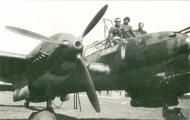






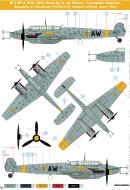
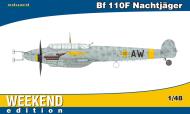

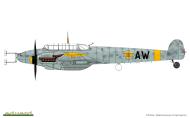


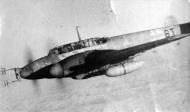
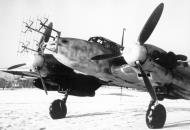





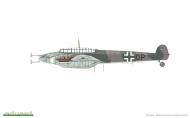
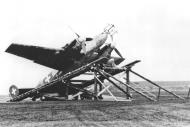
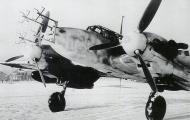




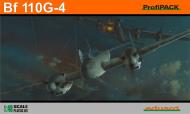
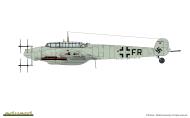
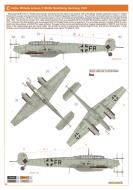
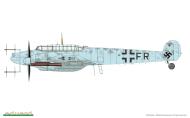
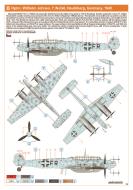
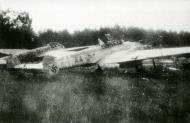

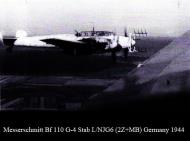


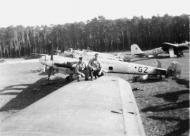




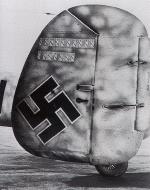
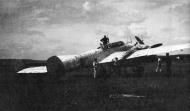

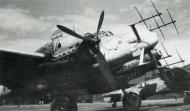

 Nachtjagdgeschwader 6 - NJG6
Nachtjagdgeschwader 6 - NJG6